to win the prospect’s heart - Benefits sell!
10 mistakes sales reps make way too often (and how to avoid them) Posted by Zarema Plaksij on 2 April, 2020 - 1 Comment ...
10 mistakes sales reps make way too often (and how to avoid them)
Posted by Zarema Plaksij on 2 April, 2020 - 1 Comment
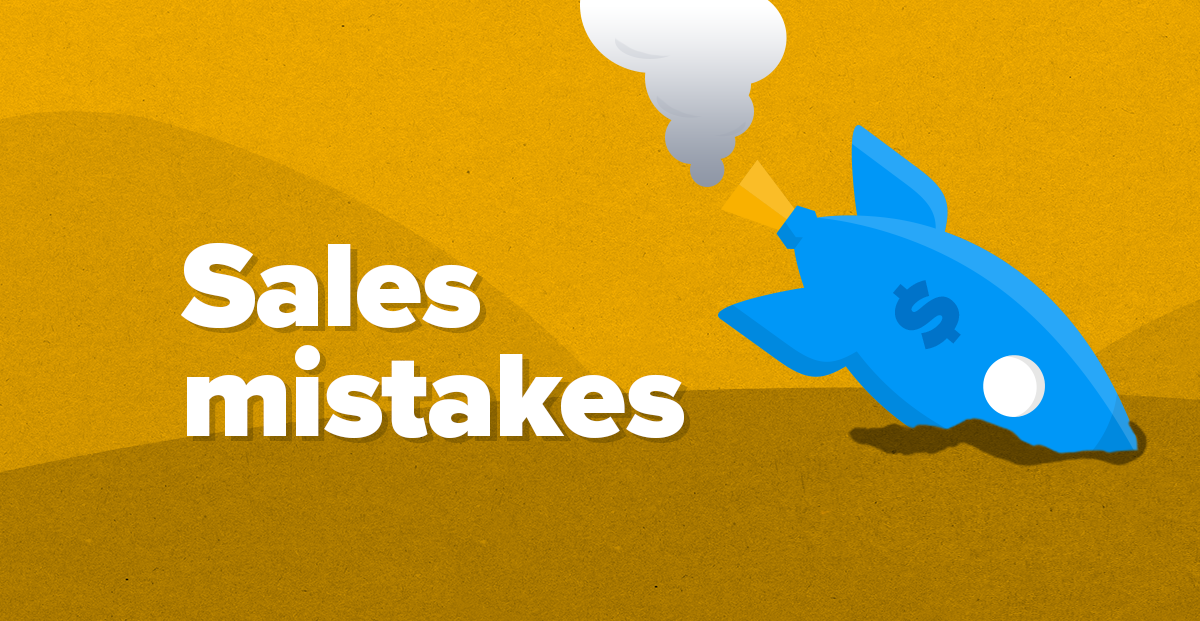
Sales is art.
It takes both talent and skill to be a really good sales person.
Just like in sports, in order to reach mastery in sales you need to practice, take risks, make mistakes and learn from them.
There’s a number of common missteps that almost everyone takes during their sales career. Trying to win a sale, salespeople tend to exaggerate, overestimate, misinterpret, and otherwise miss the mark.
To make your road to a perfect sale a bit easier, here is a cheat-sheet that will help you avoid 10 mistakes that most salespeople make.
1. Not listening and talking too much
When you’re trying to sell something, instinctively you want to talk a lot: passionately describe the benefits and the great features of your offering, flaunt your knowledge and … push, push, push.
But that’s not entirely effective. Pushy salespeople don’t go far. Considerate ones do. And let’s be honest – you’re not the only one selling!
Instead, listen and ask more questions. In fact, your listening-talking ratio should be 60/40.
A study shows that top-closing professionals in B2B sales on average speak only 43% of the time, allowing prospects to speak 57% of the time.
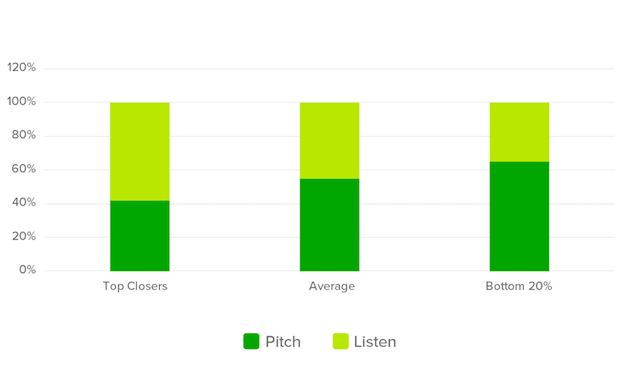
Listening more and asking targeted questions helps you understand the customer’s business needs and tailor your offering better. It will also help you get to know them as individuals (preferences and tastes) and show that you care.
And the best thing? By asking questions and listening you enable the potential customer to do all the job for you – reveal their main pains and identify ways how you can solve them. This is especially valuable during the prospecting (consideration and qualification) stage of the sales process.
2. Offering too much for nothing
This is a direct negative spin-off of talking too much. In trying to win the customer, some salespeople tend to offer too much help for nothing and in this way become an unpaid consultant.
Being helpful is, of course, a plus. But there should be limits. Prospects love to milk sales reps for information and advice, even when they don’t intend to actually buy anything.
Don’t forget that information is power!
In your attempt to win the prospect’s heart, you may give out too many insights without getting anything in return. Don’t give out free consultations – instead offer solutions to problems in the form of your sales offering.
Talking about solutions…
3. Not focusing on the solution
This tip may be old, but it’s probably the most important one.
As a salesperson, you would be drawn to boast about all the cool features your product or service has. But, the problem is … it’s not going to make a sale.
Instead of describing the bells and whistles, you’d better focus on how your product can solve the most critical problems your prospect is trying to tackle.
For example, you’re selling people management (HR) consultancy. Instead of describing what seminars, workshops and employee-development handbooks you can offer, you are better off explaining how your consultancy can help decrease staff turnover and increase quarterly KPI achievement rates.
The solution that you offer here is a straightforward and obvious benefit that will urge your prospects to buy!
It’s important to understand that your prospects are not that interested HOW you do it, they are interested in WHAT you can do.
I guess what I’m trying to say here is – Features tell, Benefits sell!
4. Focusing on price not value
People buy value, not price.
If you believe that the price will sell the product, you’re trapped in an illusion. And it’s time to snap out of it.
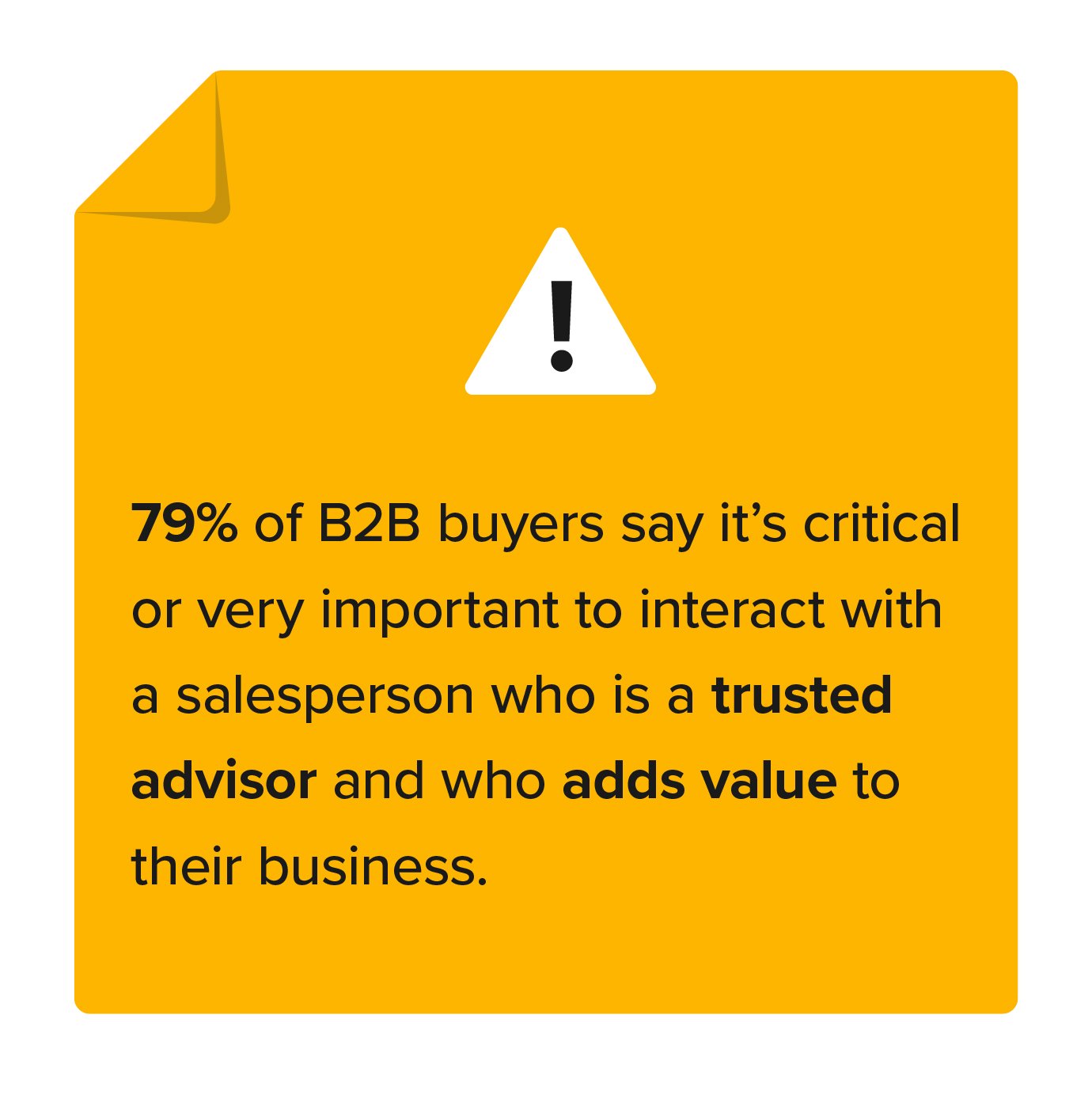
First, heavily relying on low prices, offering discounts here and there, giving out special promotions, will only get you instant, but not long-term gratification – bargain hunters. This type of customer will buy from you, but will run away the moment somebody else tempts them with a bigger discount.
Do you really need that?
Second, even though price is traditionally viewed as a decisive factor and almost all customers demand lower prices, they won’t buy a product just because it’s cheap. They will buy a product that is valuable for them. And if this value is substantial, all customers will pay a bigger price.
All you need to do is remind the prospect that buying cheap often results in poor quality and higher costs in the long term. Buying more expensive quality means more value and lower costs down the road.
5. Making promises you can’t keep
Overpromising and underdelivering equals to mere lying in business.
No matter how much you want to sell, lying is a bad way to start any relationship. Exaggerating your product or service capabilities, or even worse – hiding limitations or special conditions, will not take you far.
Think of it – would you want to spend your money on lies? I bet – no.
But how do you sell then? Here are two suggestions:
- Instead of over-promising, let the prospects sell to themselves. You can do it by asking the right questions that’ll gently push the prospect to the right direction. In the end, they’ll convince themselves that they need your product.
- Another way is particularly suitable for the free trial stage. To make sure your prospects are pleasantly surprised, you can actually under promise and over deliver. If the expectations are low, but the product can actually do more, then prospects will be blown away with the experience they get. This will help you win them over during the next sale stage.
All in all – it’s better to sell nothing, than to make a dishonest sale. Because if your customers later find out about a problem you “forgot to mention”, you will not only lose the customer, but also your reputation and further sales.
6. Not having an intention to close a sale
You will be surprised how many talented salespeople are selling for the sake of making signature sales pitches and killer slideshows, and not actually concentrating on selling.
Those are the oratory skills and a display of their sales craftsmanship that makes them tick, not the actual number of closed deals.
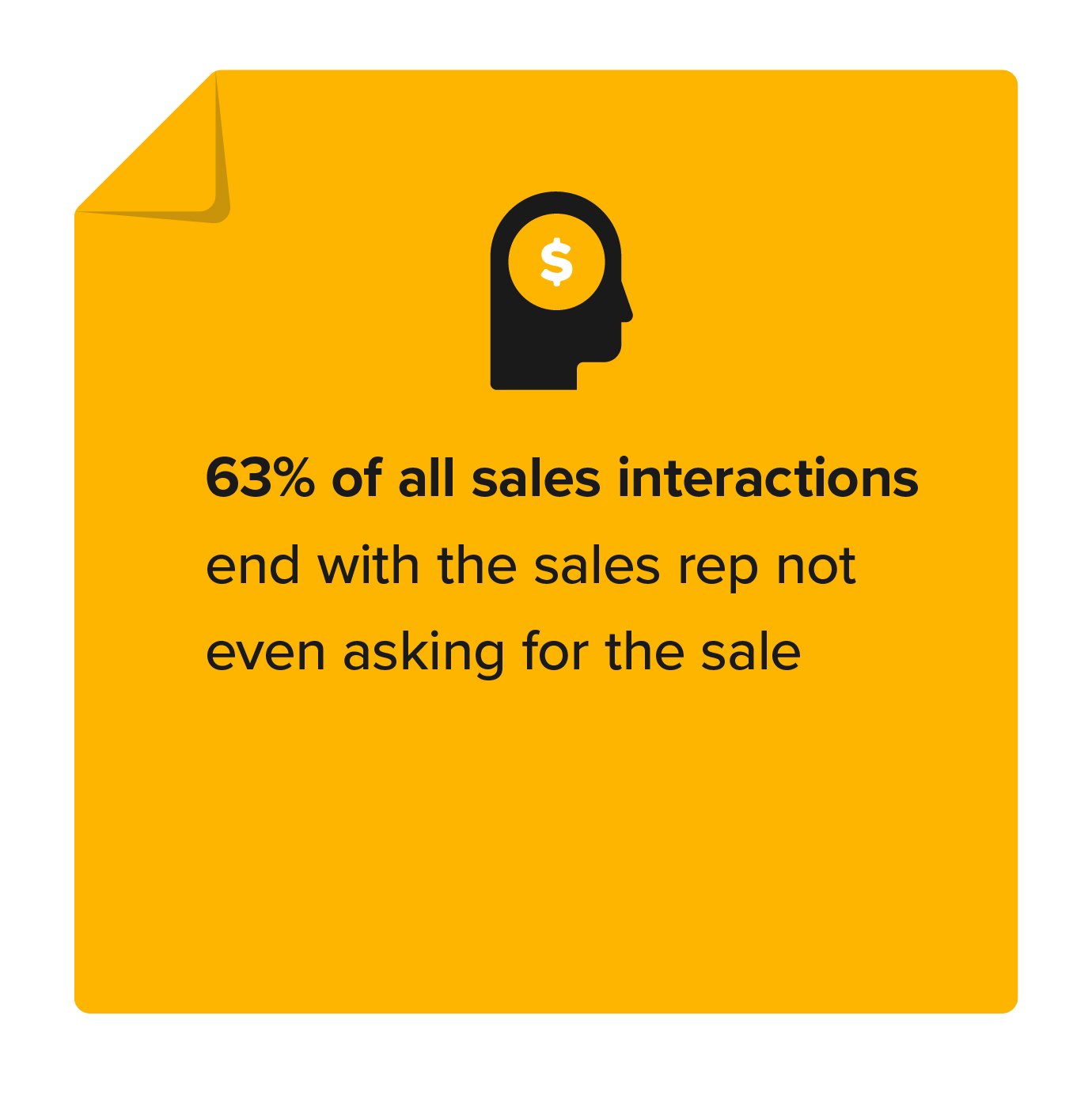
My advice is leave vanity at the door, and step into a sale determined to turn the prospect into a customer. You have to actually ask the prospect to buy – as blunt as that! And the earlier in the sales process you do that – the better.
How? Just go ahead and do it! There’s no other way about it. Confidently declare to the prospect from the onset that you intend to close this sale. Don’t allow anything to steal your sale by practicing urgency.
Does it work? You bet it does!
Let me give you our own example. Some time ago, we noticed that our most successful sales reps would ask for a sign-off in the middle of the sales process, instead of towards the end. So, we decided to introduce an earlier sign-off in our sales process. And it worked! Asking for commitment earlier in the process resulted in a staggering 50% increase in the number of closed sales.
Ker-Ching!
7. Not being ready to overcome objections
Nobody likes to get “No” for an answer.
However, allowing the customers to say “No” has its benefits. This way you increase the value of “Yes” when the time is right. Repeated rejections only increase the buying decision when the customer finally sees what they like.
For example, real estate agents use this trick a lot: they first show not so great houses, and keep the really good one for dessert. After saying “No” too many times, saying “Yes” comes as a relief!
Dealing with objections in sales is truly a form of art. You have to stay cool, show that you understand their concerns and see their point of view, always answer honestly, respectfully and succinctly. And never-ever use the phrase: “As I said before” when dealing with “annoying” objections. That’s just a sale-killer. Instead, acknowledge the hostile question or objection as a valid point, rephrase it, and … use some humor.
Finally, if nothing works – maybe the prospect you are trying to sell to is not a good fit for you? The ability to timely notice and abandon a sale with low closing probability is a very important skill too. After all, studies show that at least 50% of prospects are typically not a good fit for what you sell.
8. Arguing with a potential customer
Even though this may sound obvious, many a sales rep fall prey to this mistake.
When a prospect’s objections become unreasonable or even contradict logic, it’s easy to lose temper and start defending your truth. But don’t. Simply don’t.
Arguing with potential customers will result in you losing the sale. Almost every single time.
If you disagree with what they have to say, keep silent or say that you hear them, something like “I can see where you’re coming from.” Again, ask questions to clarify their position, paraphrase their statements, but never ever argue.
Once again (sorry for the repetition): if you see that you face the wall, it’s wiser to walk away and focus on other, more lucrative opportunities. In the end of the day – you can’t make everybody happy.
9. Not doing your homework
I’m sure you’ve heard this before: “If you fail to prepare, prepare to fail.”
Just like going to a job interview, you need to prepare for the sale and find out everything you can about the prospect. If you meet with a potential customer unprepared, it will show. Especially since your prospects are busy researching you! What if they know you better than you know them?
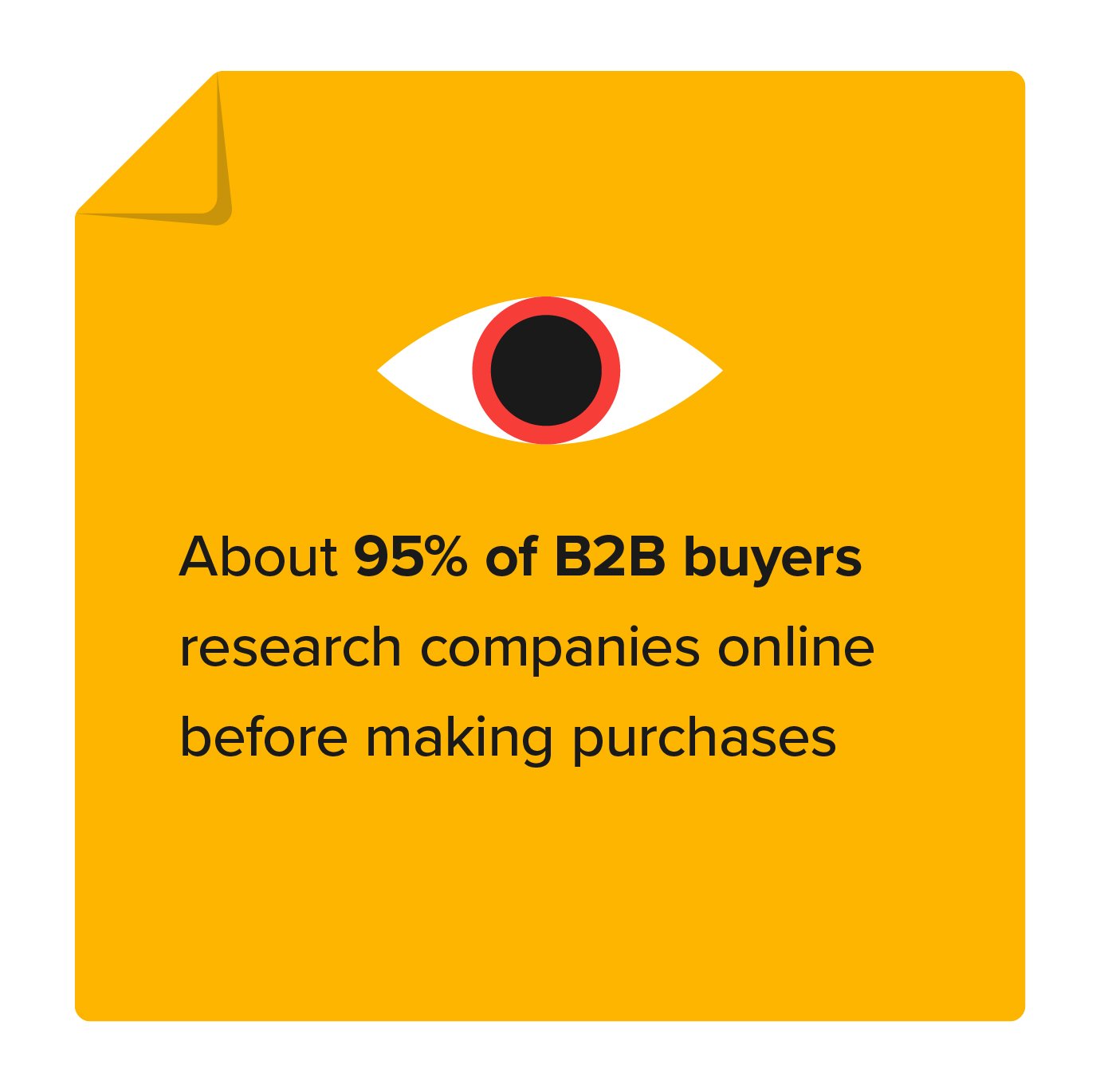
Not only will preparation help you communicate better and ask the right questions, but also tailor your offering, customize your sales pitch and voice the right benefits that would strike the right cords with that particular prospect.
You need to look into your prospect’s professional and even personal background to be able to establish good rapport. Because rapport builds trust. And hardly anyone wants to buy anything from a person they don’t trust.
After all, in the age of the Internet, you have absolutely no excuse for not doing your homework.
10. Not getting access to decision-makers
You can’t just sell to anyone.
To close a deal, you need to deal with the people who are qualified to make a purchasing decision. Otherwise, you will simply waste your time.
In SuperOffice – we call it the Power Stage, and it is step number 3 in our sales process. We are convinced that the sooner we are able to meet with decision-makers, the more effective the outcome will be.
During this stage you can agree on expectations, build a business case that shows the ROI, come up with a proposal and devise a plan of actions. That’s why this stage is very important. The sooner you get to talk to the decision-maker, then more chances you have to close a deal.
Bonus tip: Don’t sell ice to an Eskimo
Back in the days overconfident salespeople used to boast their incredible sales skills by saying they could sell ice to an Eskimo.
Ok, let me just put it straight – selling anything to anyone is a nonsense that you should ditch once and for all!
Today’s sales standards (and ethics) are quite different, and “selling for the sake of selling” is nothing but a counter-productive tactic.
First of all, you’re wasting your time and effort trying to convince a person or a company to buy, even if they may not need your products at all.
So, instead of selling to those who actually need your products or services and creating long-term value, you are selling just to prove that you can. Well, that’s just an exercise in vanity, isn’t it?
And even if you manage to sell to a random person or company, it won’t really benefit your business. Why? Because real money comes from repeat business, not one-off deals.
Having loyal customers does pay off, as 65% of a company’s business comes from existing customers, while, repeat customers spend 33% more than new customers.
Second, if you sell a product that a company doesn’t need, it will never be a perfect fit. At best, they will end up disappointed. Worst – they will start talking. Talking to their partners, customers, etc. about how your product is useless and a waste of money. So, you may end up with your company’s name tagged on social media in a “not-so-flattering” context.
Now, do you really want that?
Bottom line is – don’t EVER force a sale on somebody who doesn’t want or need your products or services. Instead, simply admit it and move on!
Third, selling stuff people don’t need is simply tacky.
A professional and respected sales rep won’t get so desperate. Instead, a really cool sales rep is the one who cares about customers, who wants to help and offer great solutions. Listening to your prospect’s needs and looking at ways you can help, makes you a “classy sales rep” who knows when not to sell.
Following the new sales playbook
Mistakes happen. So, don’t be hard on yourself if any item from this list rings a bell.
One of the reasons salespeople continue to make the same sales mistakes is because they are using the same, old sales playbook.
And that playbook doesn’t work anymore!
Modern buyers have changed, and so did their buying behaviors. B2B buyers have access to all the information there is on products or services and make extensive research before they even approach the sales person. And 57% of decisions are made before the buyers even pick up a phone to speak to a sales person!
This means you, as a sales rep, must change your game too. Traditional tricks don’t work. New and innovative practices and attitudes should be adopted.
Here are a handful of new trends that will increase your chances of selling to the new, discerning customer:
- Stop selling price and focus on creating long-term value.
- Show that you have your prospect’s best interests at heart, build your reputation of a sales rep with integrity, and don’t be afraid to ask for the sale.
- Be present where your customer wants to contact you: social media, chat, phone or email.
- Use the newest technology that helps you know your potential customers better, keep organized, provide timely information and help, and deliver on your promises.
- Follow a sales process which outlines activities that push a sales opportunity forward. Your sales process has to reflect the customer journey – meaning your potential buyers’ preferences, behaviors, and business needs.
Finally, one of the best ways to understand how to sell successfully is to listen to the customers themselves!
Here is what buyers describe as the top ways to create a positive sales experience for them.
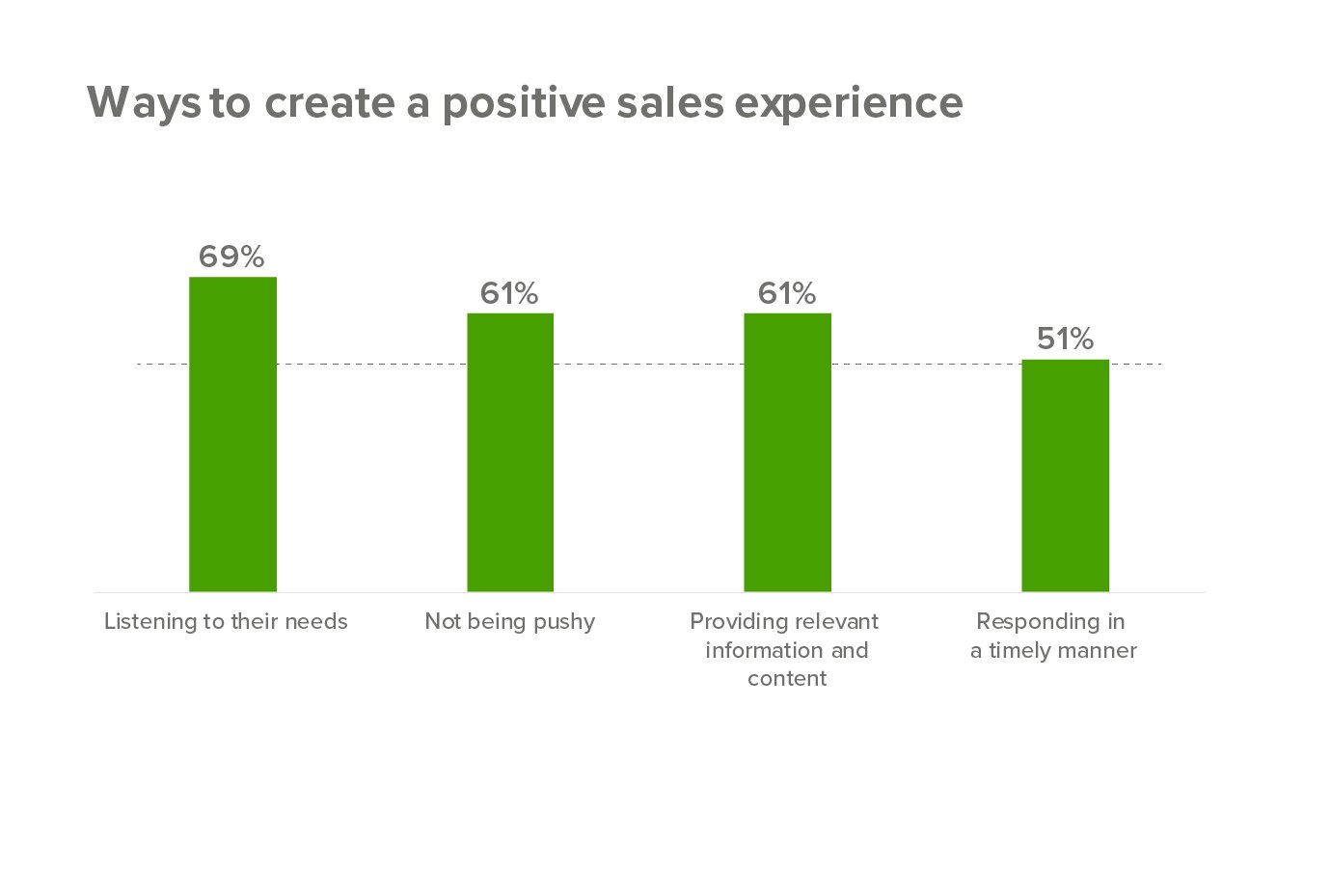
In order to win a potential customer today, you need to listen, be respectful of boundaries, be relevant and deliver on time.
Keep up with the times
But the list doesn’t stop there, as the new sales playbook is evolving each day. If you want to keep your finger on the pulse of the new sales techniques, you need to keep up with modern technology and continuously learn about what’s new in the fascinating world of sales.
How about you start right now? And learn about the 3 new B2B sales strategies to help you generate more leads or how to close more deals with the help of the CRM software?
Once you stop making sales mistakes, the next step is to start measuring what really matters in sales.

Kỹ năng
/ky-nang
Bài viết nổi bật khác
- Hot nhất
- Mới nhất